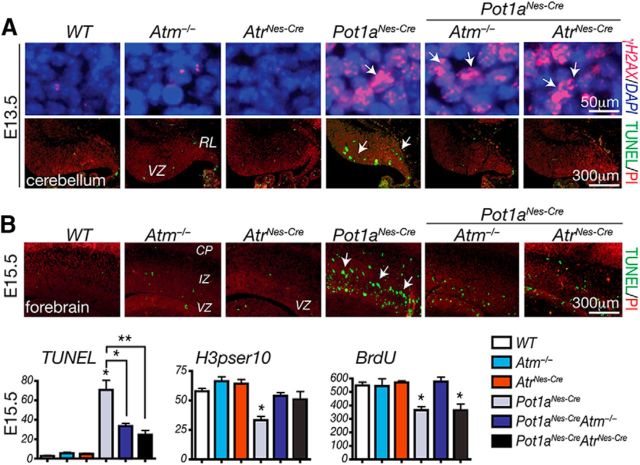Figure 6.
Atm and Atr are required for apoptosis after Pot1a loss. A, DNA damage identified by γH2AX foci (top) is apparent in the cerebellum as early as E13.5 after Pot1a loss; apoptosis (bottom; white arrows) is Atm- and Atr-dependent. VZ, Ventricular zone; RL, rhombic lip. B, Apoptosis in the E15.5 forebrain also occurs after Pot1a loss, and this apoptosis is abrogated by coincident inactivation of Atm or Atr. Proliferation defects in the Pot1aNes-cre forebrain after coincident loss of Atr were not fully rescued, which is likely associated with the complex neurological phenotype that eventually develops after Atr loss during neural development (Lee et al., 2001, 2012b). Analysis of proliferation using phospho-Ser10 of histone H3 or BrdU labeling indicates that Atm loss rescues the proliferation defects after Pot1a loss. **p < 0.0001. *p < 0.001.

